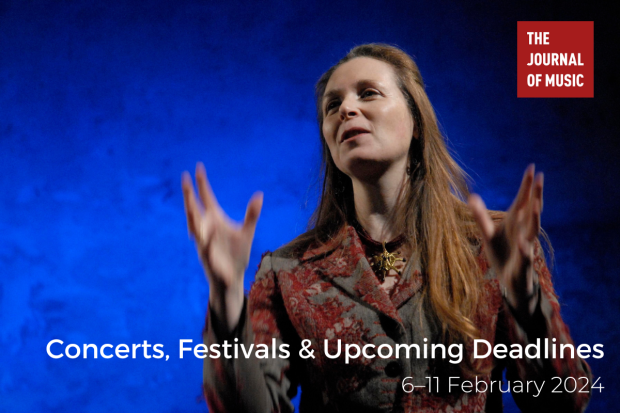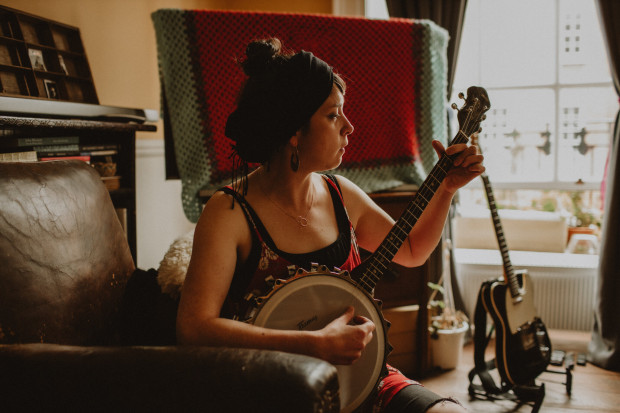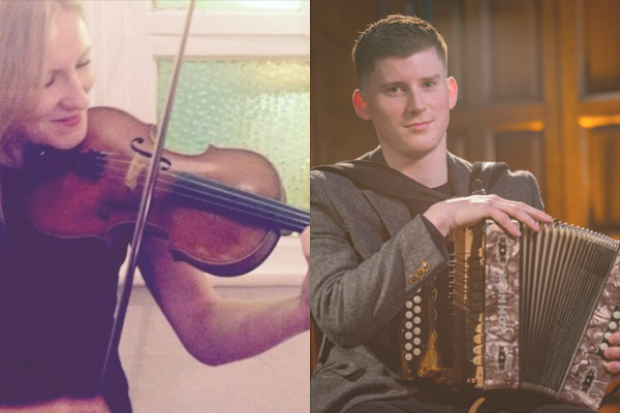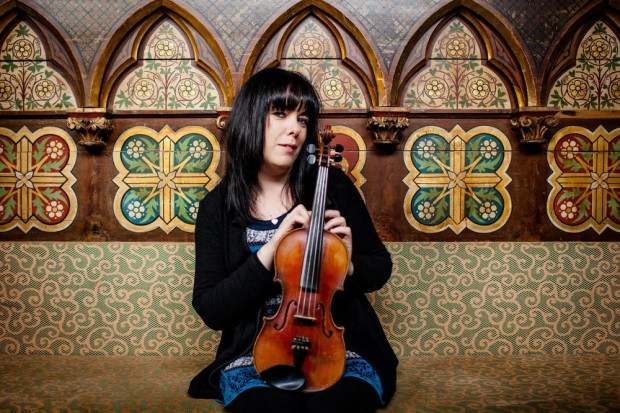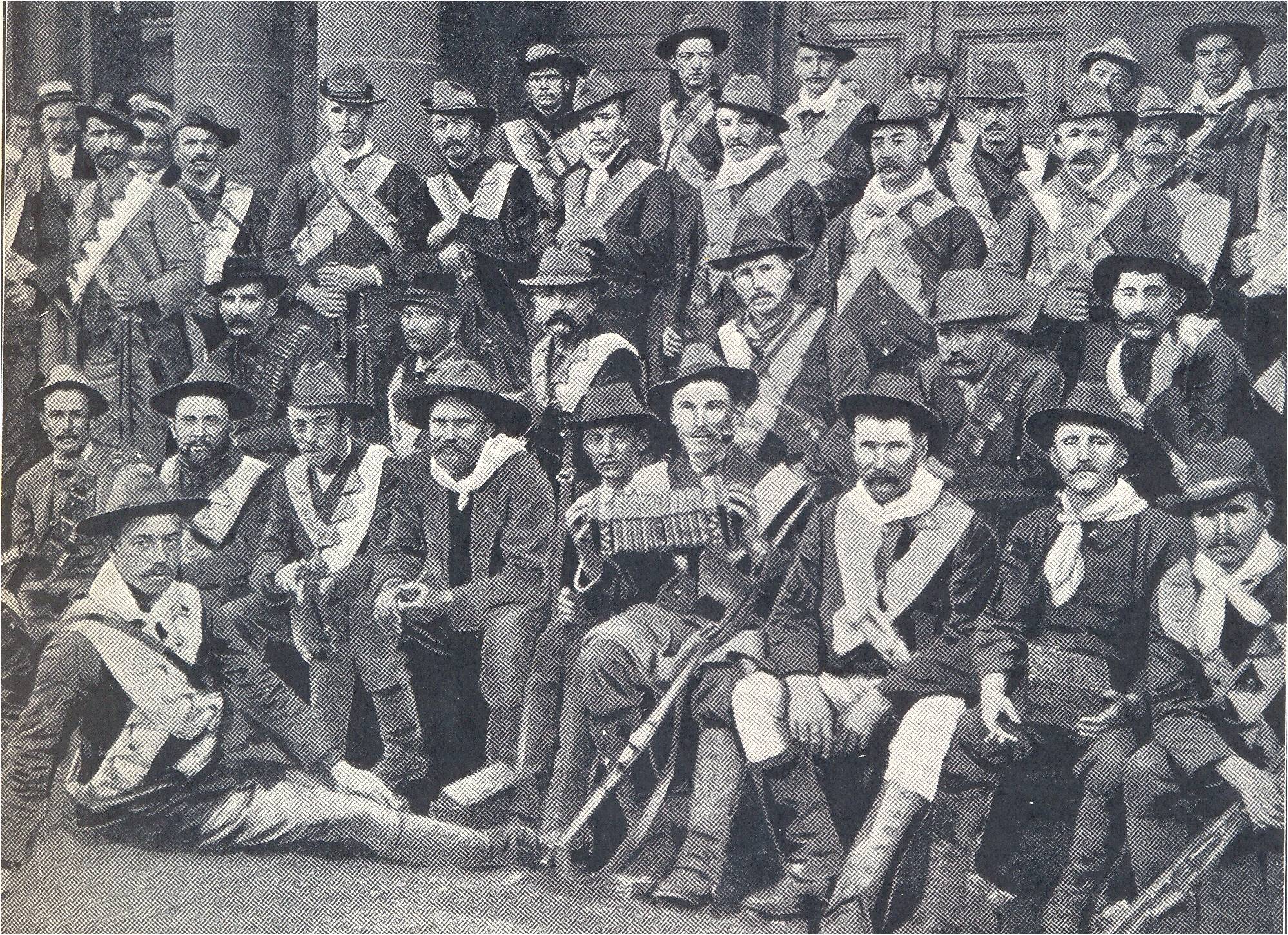
A brigade of Irish volunteers who supported the Boers in the Anglo-Boer war, 1899. This is the earliest known photograph of an Irish concertina player. (Courtesy of the Irish Traditional Music Archive)
The Social History of the Concertina
Concertina Cruinniú, the first festival celebration of the concertina in Ireland in a number of years, begins this Friday in Miltown Malbay, Co. Clare. The weekend of events, which include classes for all grades, instrument maintenance workshops, and performances by artists such as Noel Hill and Chris Droney, will begin with an illustrated lecture by Dan Worrall on the social history of the concertina.
Titled ‘Pride of Place: The Origins of Anglo-German Concertina Playing in Clare and Beyond’, the lecture will employ archival audio clips of some of the earliest-recorded players, as well as photographs and images from the era. Worrall spoke to The Journal of Music about his research:
As popular as the concertina is in Ireland today, its heyday was in the late nineteenth century, and there is not a lot known or published about the instrument and its repertoire in Ireland at that time. My talk will explore the beginnings of its use in Ireland, at a time when Captain O’Neill (the tune collector) and the Gaelic League shunned it and its repertoire of new dance tunes as ‘foreign’ – a bit ironic, in that this was also a time when many old sources tell us that nearly every house in the Irish countryside had one…
He explains that that the heyday of the concertina in Ireland occurred between two major historical events:
The German concertina arrived just after the end of the Great Famine, and its period of highest popularity was all but over by the Irish War of Independence (1917–1921). That heyday roughly coincides with similar heydays in England, Australia, and South Africa. In my research, I collected archival recordings of the earliest recorded concertina players in these four countries (the only requirement was that the musician had become a mature player before 1920, which sharply narrows down the list), in order to examine what its uses were, what players’ repertoires contained, and which playing techniques (fingerings) were employed. I also combed through digitally archived newspapers, magazines, books and diaries of the time in each of these countries.
Worrall’s research also illustrates how the fortunes of the concertina reflected social change:
During the heyday, there was a culture of country house dances in all of these countries. Music for house dances was typically provided by a solo concertina player who played from dusk until dawn. For obvious reasons, no bands were used in country house dances, although military garrison brass bands played for dances in the big houses of the wealthy. The globally popular dances of the time were quadrilles, waltzes, polkas, mazurkas, schottisches, varsovianas, barndances and the like, which spilled out of central Europe throughout the nineteenth century in the global ‘ballroom’ dance craze.
In Ireland, concertina players mixed these new dances in with the older, largely pre-Famine repertoire of jigs, hornpipes and reels.
The old house dances were eventually replaced by ceili dances in public halls, and the repertoire of twentieth-century concertina players shifted dramatically toward reels. Even where the dancing of quadrilles (sets) survived, the older quadrille tunes and polkas were largely replaced by reels, especially in Clare.
A concertina player himself for nearly forty years, and whose Clare-born grandmother played the German concertina in her youth, Worrall explains that the rapid-fire reels of the pre-Famine repertoire proved a challenge to the old German concertina, which was more suited to the relaxed pace of ballroom waltzes and schottisches.
In the early to middle twentieth century, Irish players purchased more efficient three-row Anglo concertinas to adapt to playing reels for ceili and set dances, and in the late twentieth century some players (especially Paddy Murphy and Noel Hill) developed new ways of fingering in order to successfully adapt the ornamentation of fiddles and pipes to this once ‘foreign’ instrument.
Worrall has published several works on the concertina, including The Anglo-German Concertina: A Social History (Concertina Press, 2009), House Dance: Dance Music Played on the Anglo-German Concertina by Musicians of the House Dance Era (Musical Traditions, 2012), and The Anglo-Concertina Music of William Kimber (English Folk Dance and Song Society, 2005). A retired geologist, he lives with his wife on a small farm in the Brazos River valley of coastal Texas and helps organize an annual concertina workshop at the Palestine Texas Old-Time Music Festival.
Dan Worrall’s lecture takes place at 7.30pm in the Markethouse in Miltown Malbay, Co. Clare, on Friday evening, 8 February. For more details on his research, visit www.angloconcertina.org
For information on Concertina Cruinniú visit www.oac.ie.











